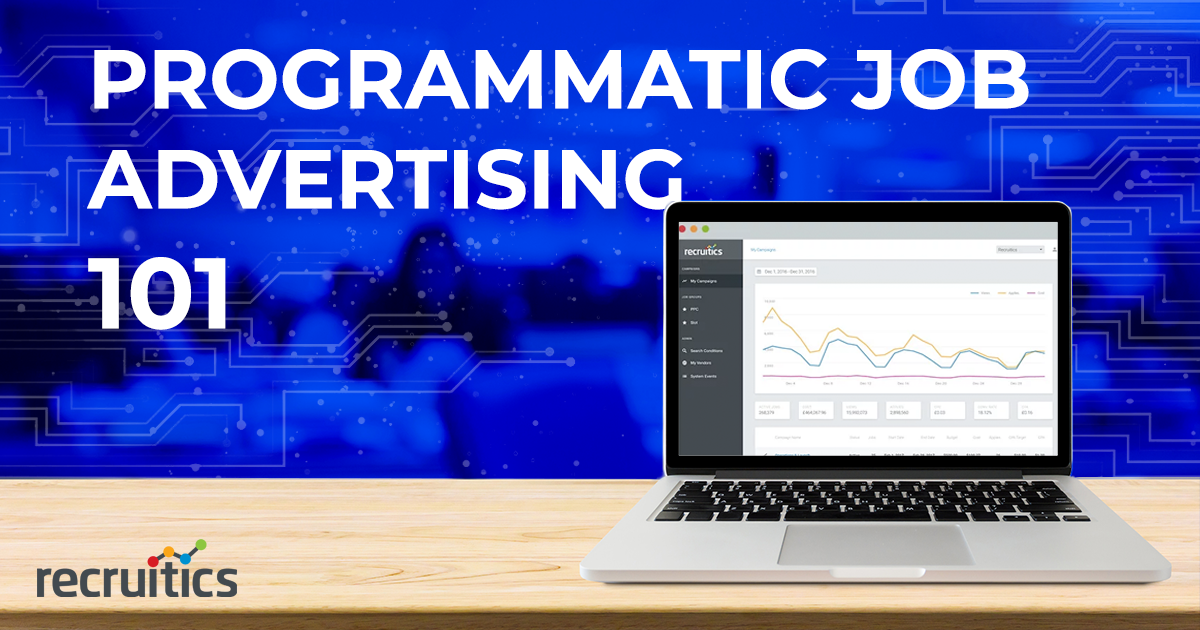
Programmatic buying is a term you’ve probably come across in the past, and one you’re probably hearing more often as recruitment grows increasingly data-driven. However, unless you have experience in the traditional marketing space, it wouldn’t be surprising for the term to be unfamiliar in the context of recruitment marketing.
Unfortunately, while much ink has been spilled on programmatic for the traditional marketing space, few have taken on the task of explaining how programmatic buying technology works specifically for talent acquisition.

In this article, we’ll do just that--but before we get into defining programmatic job advertising, we’ll need to start by building a solid foundational context. What we mean here is that, in order to understand the technology, you must first understand the problems it was built to solve.
You’ll need to understand:
While you can find more in-depth information on each of the three topics above using the links attached to them, let’s quickly address each.
Recruitment marketing is the practice of taking a proactive approach to recruitment by using marketing best practices and tools to build awareness for your open positions, to attract top talent and to engage them to the point of submitting an application and entering your hiring funnel.
Because of this, recruitment marketing requires that you buy job ads on popular job boards, job aggregators, social media and other employment sites where your target audience might be conducting their search. This is similar to the way marketers buy ad space on relevant websites to attract and engage leads.
As stated above, recruitment marketing involves the purchasing and posting of job ads. A job ad is simply a job posted to a website where potential candidates can view and (hopefully) apply to your open positions. How your job ad is purchased and performs is determined by the type of media you use for it.
While there are many different types of media available to HR and talent acquisition professionals like yourself, there are three main types that you’re most likely to encounter in recruitment marketing: performance-based media (like PPC or PPA), job postings (flat, transactional cost or contract) and job slots (inventory-based purchases). While certain programmatic job advertising technology can be used to optimize job slots (here’s how ours works), it’s mainly used to optimize performance-based media--or media that you’re only charged for when measurable results are produced.
Performance-based media comes in a number of forms, the most popular being Cost-Per-Click (CPC) and Cost-Per-Applicant (CPA). If you were to purchase this type of media, the publisher would only charge you if your job ads receive clicks (in the case of CPC) or applicants (in the case of CPA). Since the cost of this media can only be determined after its performance is gauged, it can’t be sold on a contract-basis like job posts and job slots are.
Rather, performance-based media is often sold through a “bidding” or “auction” system. If you already run Google AdWords campaigns, or are familiar with sites like eBay, then these systems won’t seem alien to you. Essentially, based on the demand and competition at a given time, the publisher will set a bid price--or how much you must pay for each action (i.e. a click or applicant)--for each of your jobs.
Because bid prices are determined by demand and competition, the prices for job ads tend to fluctuate and can be volatile at times (think, stock market).
Programmatic job advertising technology exists to create greater spend efficiency in these bid-based marketplaces by automating a significant portion of the manual job ad buying process. Programmatic platforms allows HR and talent acquisition professionals to accomplish what humans alone would be unable to: make buying decisions in a split second, based on a pre-established set of rules and real-time performance data.
By leveraging a programmatic job advertising platform to buy your job ads--also known as programmatic buying--you can set specific rules to govern your job advertising budgets to produce exactly the results you need, whether that’s a certain number of applicants for particular jobs, a particular CPA goal or a specific conversion rate.
The way programmatic buying works for job ads is different from the way it works in traditional marketing--an important distinction to note. Often, in traditional marketing, algorithms are used to crunch massive amounts of data in order to determine which ads should go to which sites and at what times. This use of big data is possible thanks to the massive scale that traditional ads are distributed on.
Programmatic buying for recruitment is handled a bit differently because, while job ads can be and are created and distributed at scale, they rarely, if ever, reach the scale of a traditional ad. Further, unlike traditional advertising, job ads don’t “live” forever, in that once a position is filled, it should no longer be advertised.
That’s why programmatic buying for job ads is done through rules-based systems--like the one used in Recruitics’ first-to-market programmatic job advertising platform--rather than through an AI-powered, big data system.
In a system like ours, HR and talent acquisition professionals have the ability to set logic-based rules that govern the platform which automates their job ad spend. These rules are based on if/then statements. Here are a few examples:
As is clearly evident, programmatic job advertising technology can help companies easily optimize their spend and the results of their recruitment budgets by using real-time, job-level performance data. However, without the proper analytics, efficient programmatic job advertising is challenging, at best. (If you don’t have deep, job-level analytics, sign up for our FREE recruitment marketing analytics dashboard, Recruitics Analytics, today!)
To learn more about programmatic job advertising, and how Recruitics can help you optimize your recruitment marketing ROI, sign up for a demo today.
info@recruitics.com
230 East Avenue
Suite 101
Norwalk, CT 06855
US +1 877 410 8004
© 2024 Recruitics • All Rights Reserved


